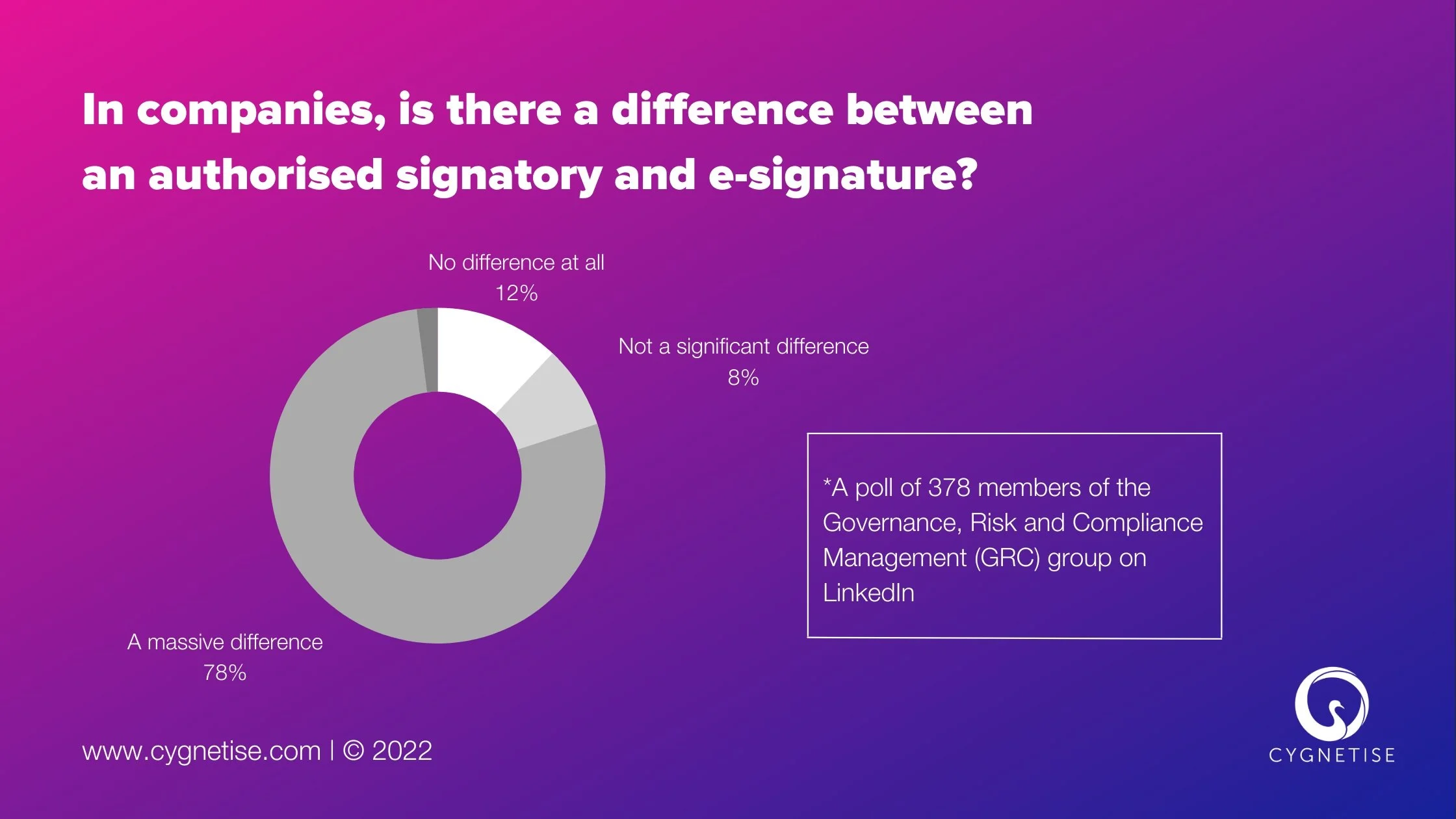e-Signature vs. authorised signatory: Is there a difference? (Survey results)
Recently, we asked the members of the Governance, Risk and Compliance Management (GRC) group on LinkedIn if they were aware of the difference between e-signatures and authorised signatories. Worryingly, according to 12% of respondents, there is “no difference at all” between the two terms whilst 8% believe that there’s no major difference. So, do e-signatures differ from authorised signatories?
Over the past couple of years, we’ve seen a massive shift towards the use of electronic or e-signatures globally triggered by the COVID-19 pandemic and the subsequent social distancing and adoption of remote working. The ability to electronically authorise contracts, transactions and orders allowed organisations to continue to operate with a certain level of normality during the crisis.
Although e-signatures have become an important part of day-to-day business operations, there seems to be still some major confusion about what “e-signature” really means and how it differs from the similar-sounding term “authorised signatory”.
According to the results of a recent poll, we ran in the Governance, Risk and Compliance Management (GRC) group on LinkedIn, 20% of people didn’t know the exact difference between an e-signature and an authorised signatory.
So, what exactly is an e-signature? And how does it differ from an authorised signatory?
As simple as it gets, an e-signature is a type of signature that is used in a digital form of communication or document. It could be a scan of an image, a photograph of a written / wet signature, a selected squiggle, or anything that is not handwritten. Anything could be used and chosen at the will of the signatory. For more information about the 3 most common types of electronic signatures, read our blog here.
An authorised signatory or signer, on the other hand, is the actual person who’s been given the right to sign / approve items (e.g. documents, bank transactions, etc.) on behalf of the authorising organisation. The term is widely used across various jurisdictions and industries, but the most popular interpretations include:
Delegated authorities
Authorised signers on bank accounts or bank mandates
Trading authorisation on investment accounts
With any type of signature, there’s always a risk of signatory forging or fraud, and unauthorised signing. Signatory authorisation is thus key for organisations’ effective governance and operations. How can they ensure all signatures, including e-signatures, are appropriately authorised? And vice versa, how do signatories know what exactly they are authorised to sign?
Cygnetise’s signatory management platform complements the use of e-signatures by providing a secure, flexible and cost-effective tool that allows organisations to manage and share authorised signatory data in real-time whilst helping them reduce the risk of fraud and signature misuse.
Best practices for implementing e-signatures
Below, we’ve prepared a list of some of the best practices for effectively and securely implementing e-signatures within your organisation:
Keep an up-to-date and easily accessible authorised signatory list.
Approve any additional signatories, if required.
Create a formal internal e-signing procedure/policy and consider adding any specific anti-fraud control and compliance measures.
Consider using a cloud-based e-signing platform to facilitate the process and a signatory authorisation platform to add an extra layer of security.
When in doubt, check with legal counsel to verify if using an e-signature is appropriate in your specific transaction.


